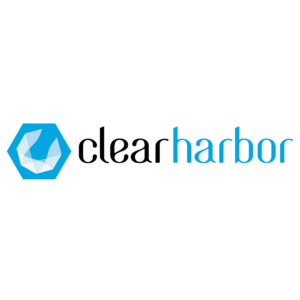Execs In The Know’s flagship CX event, Customer Response Summit (CRS), was held virtually this year from October 5–7, and is now available on-demand. The event was packed with dozens of speakers representing some of the world’s top brands, and included keynote presentations, case studies, and panel discussions. Virtual CRS also featured several opportunities to engage in interactive group discussions such as Coffee Talks, collaborative 45-minute private conversations among a small, opt-in group of CX executives focusing on predetermined, strategic topics.
The Coffee Talk conversations were hosted via a video chat format, with all participants able to chime in and add their own perspective. Coffee Talks reached max capacity prior to the event date and were not recorded to preserve and promote open conversation within the session. If you didn’t get a chance to join in a live Coffee Talk session, we’ve gathered together some of our biggest takeaways to come out of the discussions.
Below is a snapshot of insights that capture the essence of each of the five Coffee Talk discussions that took place on October 5, during Execs In The Know’s Virtual CRS.
Is Your Customer Experience Strategy Immune to the Next Crisis?
Hosted by: Interactions
1) Business continuity planning is about more than people and locations
The COVID-19 crisis exposed exactly how valuable business contingency planning could be if well-conceived. The companies that had the easiest time of it planned beyond people and locations, taking into account many of the elements that laid the groundwork for a quick pivot to work-from-home. Things like regional infrastructure, office equipment supply chains, communication and change management in a crisis, flexibility in hiring and training, and technology to enable a remote workforce were all key considerations, and remain so in preparation for the next crisis.
2) Transparency is critical in midst of a crisis
No one could have predicted 2020. How could they? It’s difficult for planners to plan for the unimaginable, but the good ones always have a plan on how they’ll react to any scenario, and it starts with a solid, proactive communication plan. The brands that weathered the onset of the COVID-19 crisis best were those that remained in constant, clear communication with their workforce and customer base. Change was occurring rapidly, and so were shifts in expectations. Keeping employees up to speed on future plans helped reduce stress and improve work performance, while informed customers were more understanding and less likely to drive up unnecessary contacts.
Stay Secure & Compliant in the New Work-At-Home Reality
Hosted by: Concentrix
3) There are several key considerations in making a permanent shift to Work-From-Home
If your company is considering making WFH a permanent part of the plan, it’s not alone. But what should be the top considerations for CX leaders? The following were some of the top considerations mentioned in a discussion about making the recent shift to WAH a permanent arrangement: safety and security, financial (cost, tax implications, etc.), performance (CSAT), productivity, cultural impact, and employee well-being.
4) A good process can sometimes bridge the technology gap
The COVID-19 crisis was a good lesson in, “You don’t know what you don’t know.” Case in point — technology. Many organizations were caught wanting when it came to the technology needed to not only shift to WFH, but then manage and maximize operations. Even though this was the case, many were able to overcome the technological shortfalls with a combination of smartly designed processes, as well as improvising with, and maximizing, existing technology.
The New Rules of Customer Service Messaging
Hosted by: Nuance
5) Most brands are already using messaging as a customer service solution
And for those that aren’t, many have launched pilot programs or are deep into investigating the technology. The philosophy behind incorporating messaging into the contact center in most aligned with the idea of “Being Where Our Customer Is,” but messaging also carries some cost advantages and can improve CX if done correctly.
6) Messaging can be used in a variety of ways, but excels at certain tasks
Messaging excels at handling transactional types of engagements, things like order tracking, verification or status updates, etc. Messaging can also be paired with a bot at the frontend to make sure customers get where they need to go for help, and messaging also carries the advantage of preserving the conversation … something that chat struggles to achieve.
Rethinking Technology to Empower CX – CTO Insights
Hosted by: TELUS International
7) The best kind of CX technology is the kind that improves the experience
When a new technology makes its way into the contact center, especially one that can have a positive impact on both the customer and employee experience, it can be a game changer. Although technology is all about solving problems, one of the best ways to solve problems in the contact center is to create greater ease. When that’s done, the result is almost always improved CSAT and ESAT scores.
8) Getting buy in from the C-suite is a critical first step toward success when implementing a new technology
Getting buy-in from leadership in order to implement a new technology often necessitates development of a thorough plan, one detailing out the why, how, and expected outcomes. Taking such an approach lends itself to defining clear expectations and success measures, while at the same time building organizational backing and support.
Intentional Service Design in The Face of Unprecedented Global Change
Hosted by: COPC
9) A crisis situation can magnify existing challenges and shortcomings, and prompt solutions
The good news is when an issue is magnified, it often attracts the focus and resources necessary for meaningful change. COVID-19 exposed organizational vulnerabilities in an entirely new way, which helped guide organizational priorities. Suddenly, bothersome problems became showstoppers, and the giant, unplanned stress test called COVID-19 acted as a clarion call to recenter on the customer, and fix or redesign broken processes and tools as a part of wider, sweeping change.
10) Necessity is the mother of all invention, especially in a global pandemic
While the pandemic laid bare many operational opportunities, it also created an environment accepting of experimentation and testing. Earlier in the year, the situation evolved quick and called for a lot of out-of-the-box thinking, thinking that could be bound by the typical layers and layers of red tape. At many organizations, this opened the door for a “can do” culture, one that often times led to new ideas and innovations that might have been otherwise unapproachable.
Execs In The Know’s Customer Response Summit is held twice annually. The next event, which is also scheduled to be held virtually, will be taking place in April 2021. Be sure to keep an eye on the Execs In The Know Event Page for more details as they unfold.
Blog post, written by: Execs In The Know
Register to for the Virtual Customer Response Summit to view sessions On-Demand




























































 TELUS Digital
TELUS Digital ibex delivers innovative BPO, smart digital marketing, online acquisition technology, and end-to-end customer engagement solutions to help companies acquire, engage and retain customers. ibex leverages its diverse global team and industry-leading technology, including its AI-powered ibex Wave iX solutions suite, to drive superior CX for top brands across retail, e-commerce, healthcare, fintech, utilities and logistics.
ibex delivers innovative BPO, smart digital marketing, online acquisition technology, and end-to-end customer engagement solutions to help companies acquire, engage and retain customers. ibex leverages its diverse global team and industry-leading technology, including its AI-powered ibex Wave iX solutions suite, to drive superior CX for top brands across retail, e-commerce, healthcare, fintech, utilities and logistics.






















 Trista Miller
Trista Miller




























